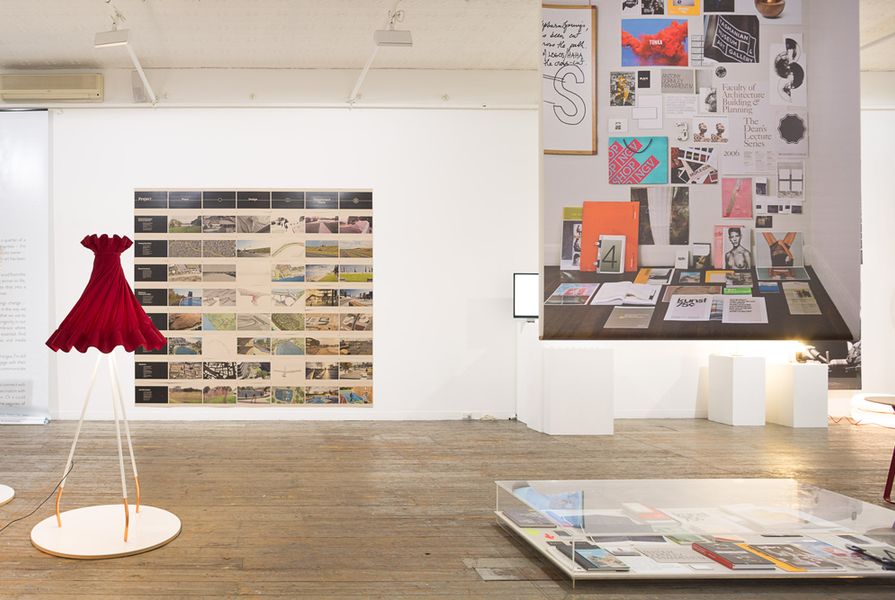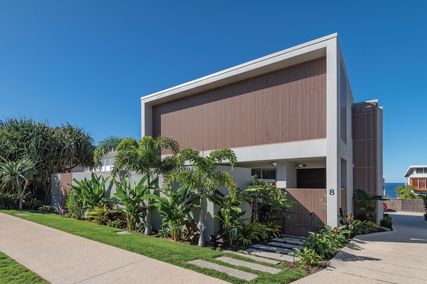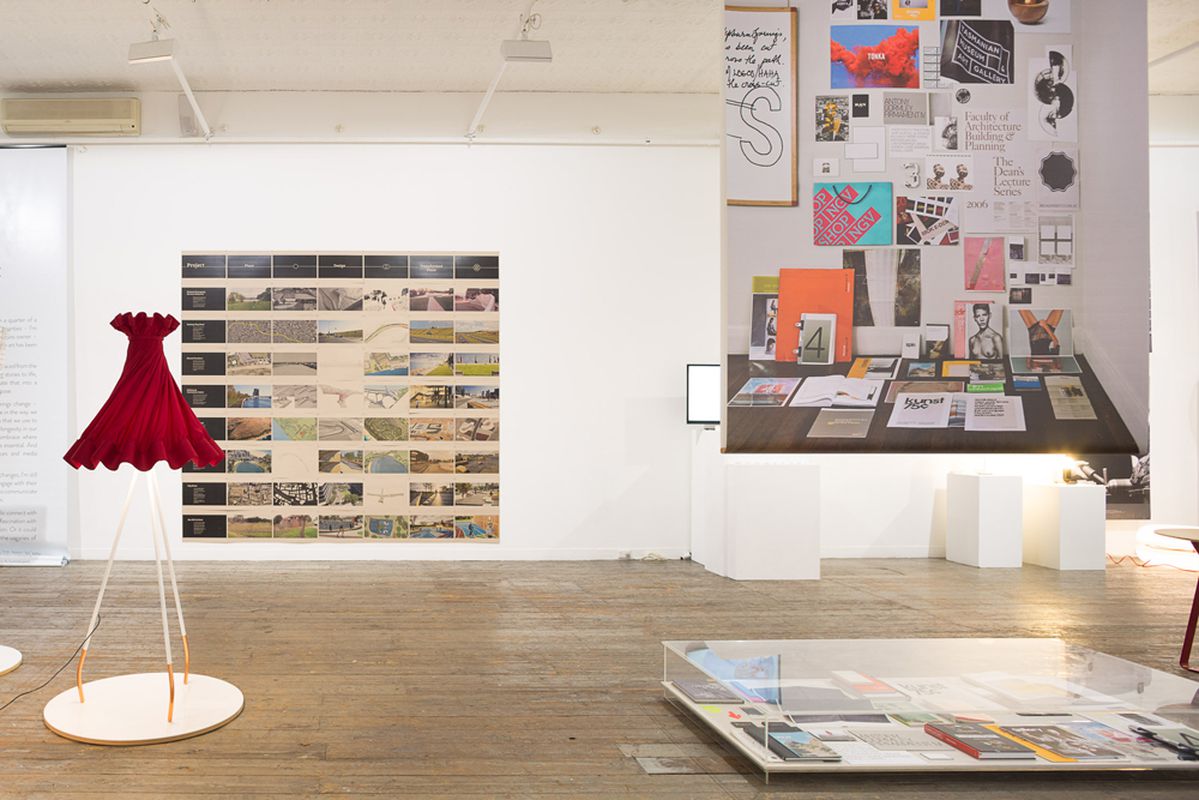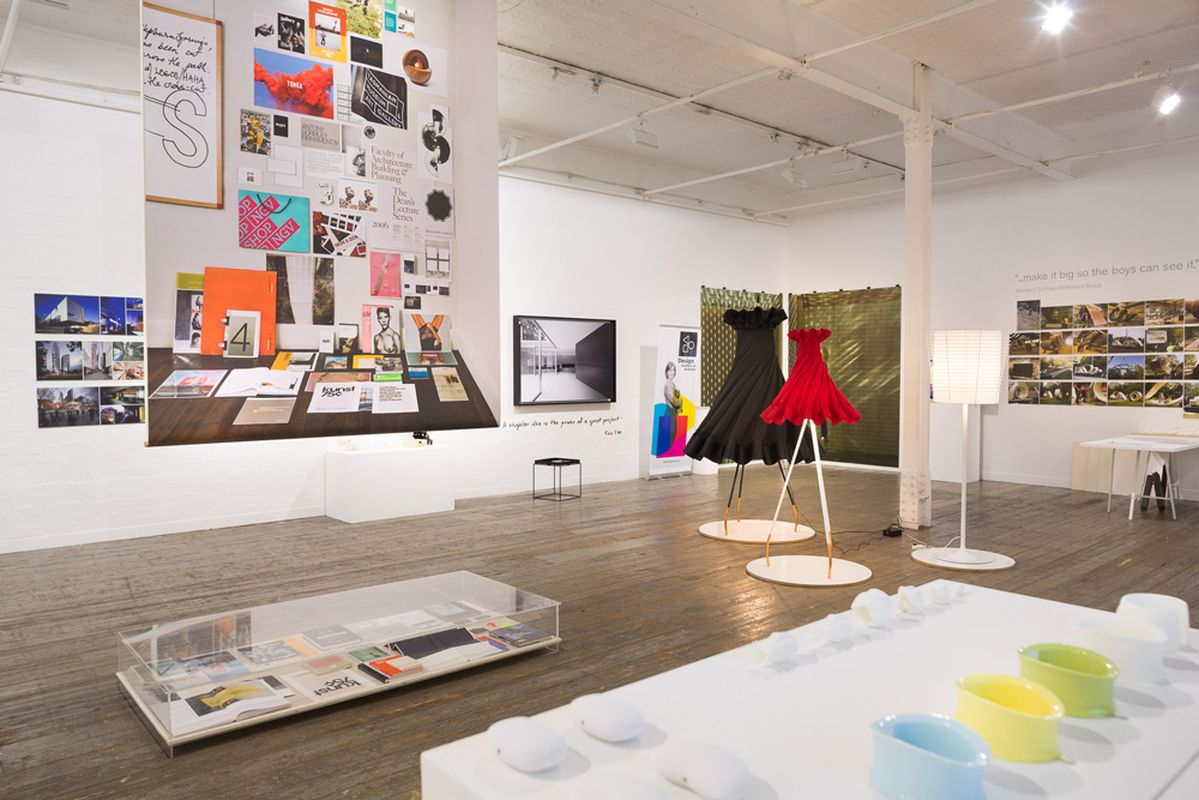Presented by the Design Institute of Australia’s Victoria Tasmania branch and curated by Daniella Casamento, Women In Design showcased the work, ideas and inspirations of fourteen Melbourne-based designers from a variety of creative disciplines. These designers included Kirsten Bauer (landscape architecture), Sue Carr (interior design and architecture), Celina Clarke (industrial and lighting design), Leah Heiss (art and design), Susan Hewitt (visual arts), Helen Kontouris (industrial and furniture design), Simone LeAmon (art and design), Penelope Lee (visual arts), Debbie Ryan (interior design and architecture), Kerstin Thompson (architecture), Jenny Underwood (fashion and textiles), Helen Watts (graphic design), Michaela Webb (graphic design), and Leanne Zilka (architecture).
From the disciplines of interior design and architecture, Sue Carr of Carr Design Group and Debbie Ryan of McBride Charles Ryan have both crafted works with a palpable sense of contemporary yet collective memory. Ryan’s part of the exhibition showed examples of her residential design work, such as the Klein Bottle House, and institutional projects such as The Infinity Centre at Penleigh and Essendon Grammar School.
Carr’s collection of interiors on show at the exhibition included Melbourne-based projects The Westin Hotel, Georg Jensen store, and Marquise Apartments. Carr’s display featured black-and-white photographs of her work alongside personal quotes describing the nature of design, including “It is the feel of the space that is important – the sensory and emotional experiences that give people a sense of ease and wellbeing.”
Kerstin Thompson of Kerstin Thompson Architects exhibited Garden House through almost-life-size imagery that scaled floor to ceiling. Thompson’s practice has completed works across a variety of sectors, with projects including the Monash University Museum of Art Gallery, the Royal Botanic Gardens Visitors’ Centre Cranbourne, Aesop retail stores, and House at Big Hill.
The Women In Design exhibition was held at Fortyfivedownstairs gallery in Melbourne in February 2014.
Image: Peter Casamento.
Research and materials are the initial reference points that highlight the collaborative work of Leanne Zilka and Jenny Underwood. Zilka, an architect, and Underwood, a textile designer, both lecture at RMIT University and both studied material science and technology. Inspired by their research of fibre-architecture and the development of fibre-based technology that interfaces with architectural space, their installation of glow-embedded fibres demonstrated the use of passive illumination and its application within the practice of design.
Landscape architect and Aspect Studios director Kirsten Bauer catalogued her work with a photographic mural of eight major urban design projects she has overseen within the practice. This hybrid of imagery displayed in the exhibition transported the viewer from the initial site, through the design phase, and to the final project.
Visual artists Susan Hewitt and Penelope Lee have collaborated to produce the sculpture Great Petition. Located at the top end of Collins Street, the sculpture is inspired by the women’s suffrage petition that was tabled in parliament in 1891 and allowed Victorian women the right to vote. The original petition bearing 30,000 signatures was termed The Monster Petition due to its sheer size. The physical size of the petition’s scroll (an incredible 260 metres in length) was the inspiration for the landmark sculpture.
The Women in Design exhibition reinforced that a platform such as this, where the ideas, processes and outcomes of designers from a range of creative disciplines is featured, makes a valuable contribution to our cultural and creative communities.























